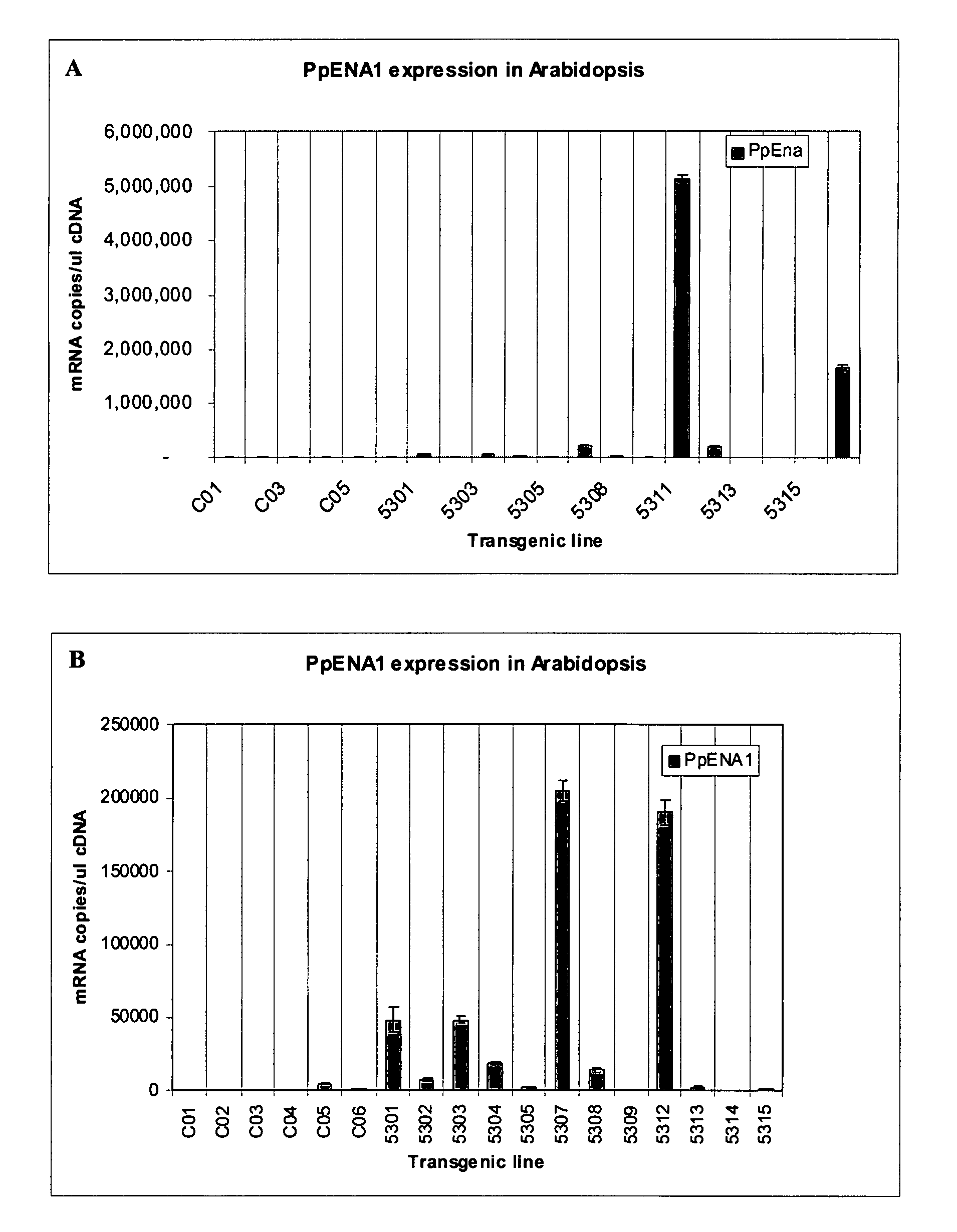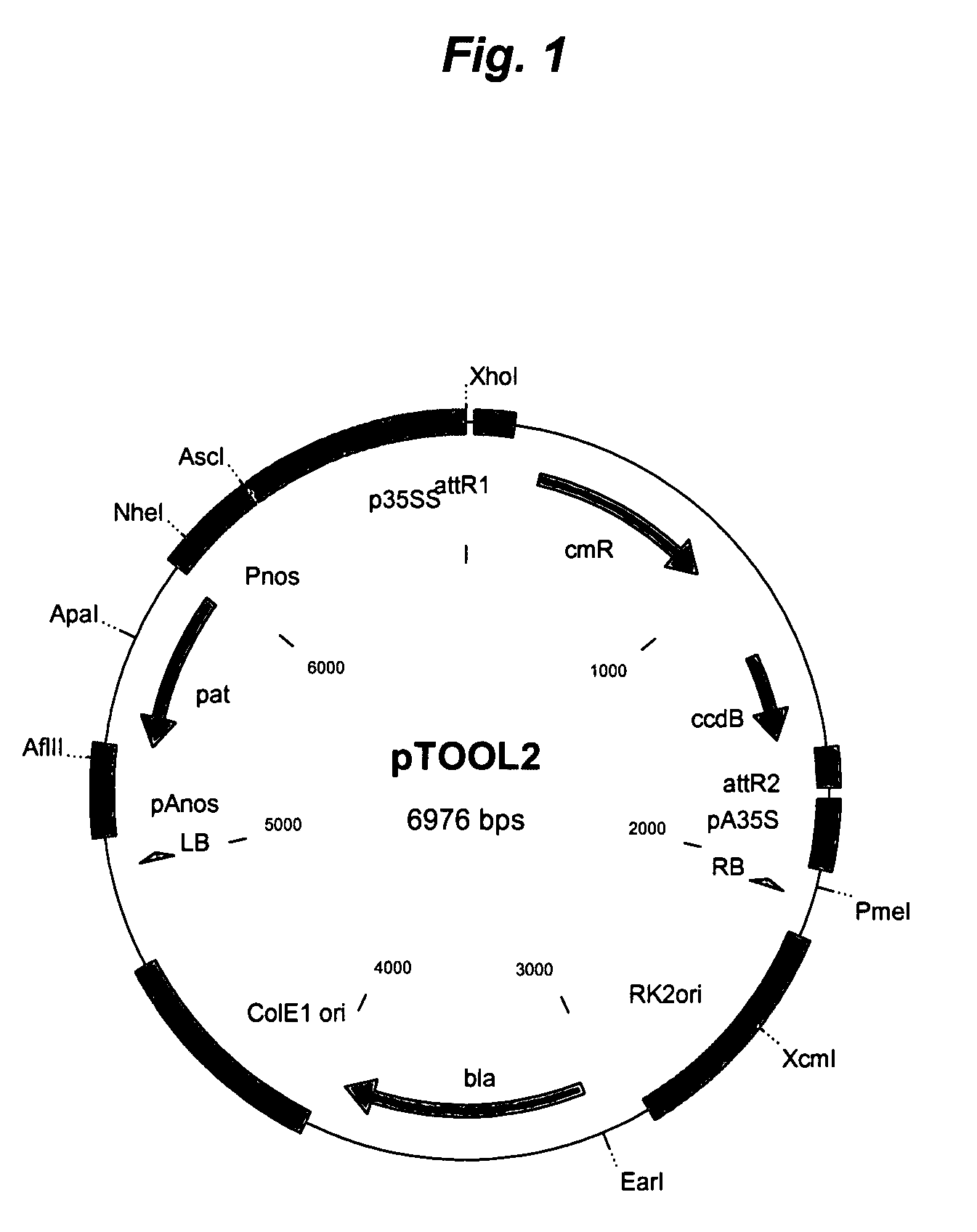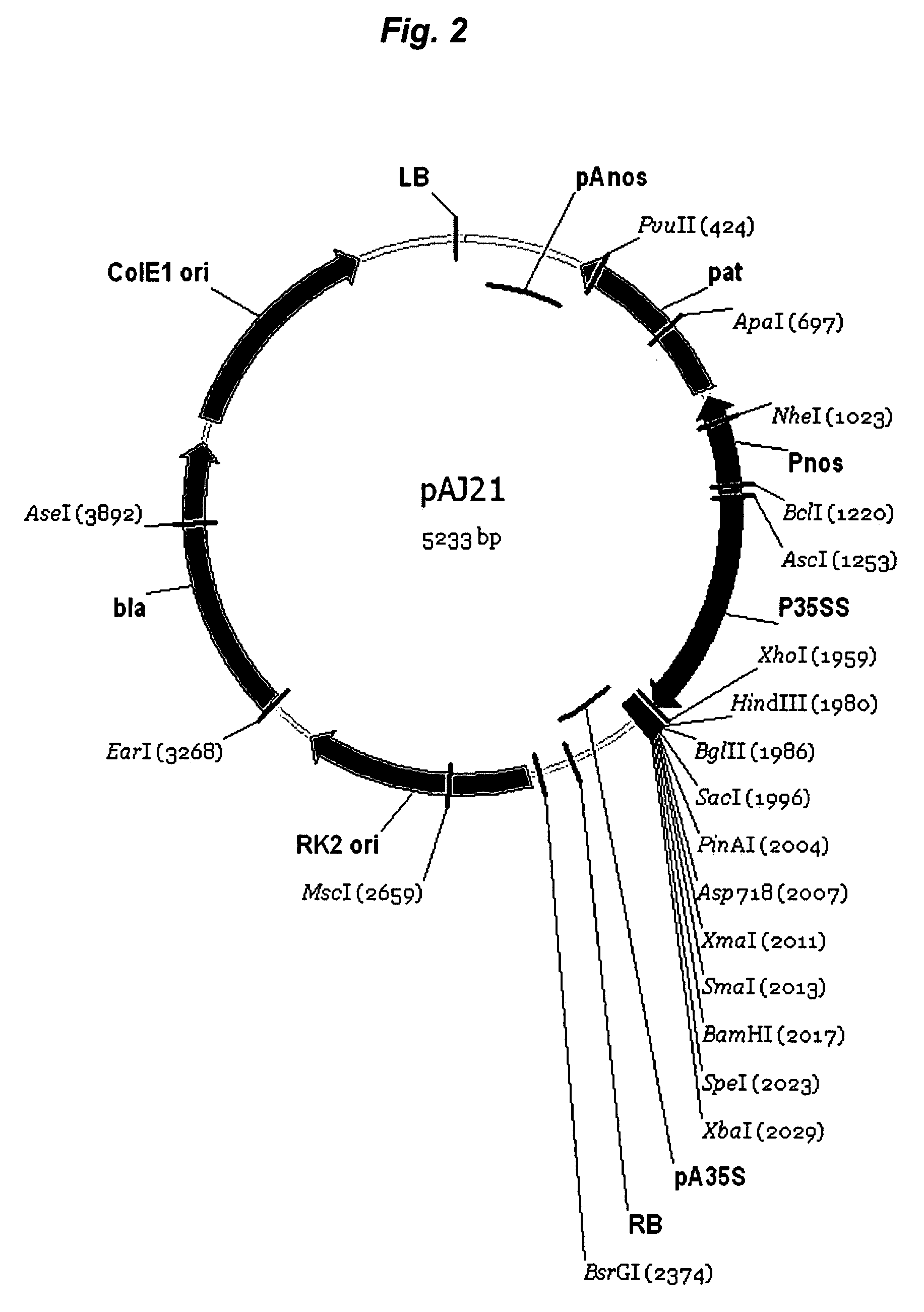Vascular plants expressing Na+ pumping ATPases
a technology of vascular plants and atpases, which is applied in the field of vascular plants and cells from vascular plants, can solve the problems of reducing net productivity and crop yield, necrosis of older leaves, and only increasing soil salinity, so as to improve the tolerance to na+, improve the growth rate, and improve the effect of respons
- Summary
- Abstract
- Description
- Claims
- Application Information
AI Technical Summary
Benefits of technology
Problems solved by technology
Method used
Image
Examples
example 1
Cloning of Physcomitrella patens ENA1, ENA2 and Saccharomyces cerevisiae ENA1cDNAs
[0155] The full length ENA1 and ScENA1cDNAs in the cloning vectors pCR 2.1-TOPO (Invitrogen) and pJQ10 respectively, may be cloned as described in Benito, B., and Rodriguez-Navarro, A. (2003). The Plant Journal 36:382-389 and Benito et al. (1997) Biochimica et Biophysica Acta 1328(2):214-26. The cDNAs were obtained from Alonso Rodriguez-Navarro.
[0156] The nucleotide sequence of the Physcomitrella patens ENA1 cDNA is provided in GenBank Accession No. AJ564254, designated SEQ ID NO. 1. The cDNA encodes a 967 amino acid Na+ pumping ATPase, designated SEQ ID NO.2.
[0157] The nucleotide sequence of the Saccharomyces cerevisiae ENA1 cDNA is provided in GenBank Accession No. AJ564254, designated SEQ ID NO. 12. The cDNA encodes a 1091 amino acid Na+ pumping ATPase, designated SEQ ID NO. 13
[0158] Briefly, cDNAs representing the complete open reading frames of the PpENA1, PpENA2 and SCENA1 genes may be obtain...
example 2
Generating Mutant P. patens Lacking PpENA1 and / or PpENA2
[0161] A restriction fragment of PpENA1 or PpENA2 may be transferred from cloned DNA into an appropriate vector e.g pGEM-T Easy (Promega). The knock-out cassette may then be generated by inserting a selective marker, e.g. a gene that confers resistance to kanamycin, hygromycin or basta, in the middle of the full length gene encoding PpENA1 or PpENA2. The cassette consists of sequence homologous to either PpENA1 or PpENA2 upstream or downstream the selective marker. Resistance to G-418 is obtained using the nptII gene behind the 35S-promoter from the pJIT145-Kan plasmid (FIG. 6). Resistance to hygromycin is obtained using the Hyg gene behind the 35S-promoter from the T-Easy 35S-Hyg plasmid (FIG. 7).
[0162] Mutant moss may then be generated by transformation. Protoplasts are generated by treating protonemal tissue with enzymes that remove the cell wall.
[0163] The protoplast is transformed (the knock-out cassette introduced) usi...
example 3
Generating Mutant P. patens Over Expressing PpENA1 and / or PpENA2
[0164] The full length clone of PpENA2 may be obtained by designing primers specific to the 5′ and 3′ end of the genomic sequence and performing PCR using cDNA as a template. A suitable over-expression vector is the pTOOL2 vector, as shown in FIG. 1. The construct may then be used to transform moss (as described above) and mutants over-expressing PpENA1, PpENA2 (or both) selected (as described above).
PUM
| Property | Measurement | Unit |
|---|---|---|
| Tm | aaaaa | aaaaa |
| volumes | aaaaa | aaaaa |
| temperatures | aaaaa | aaaaa |
Abstract
Description
Claims
Application Information
 Login to View More
Login to View More - R&D
- Intellectual Property
- Life Sciences
- Materials
- Tech Scout
- Unparalleled Data Quality
- Higher Quality Content
- 60% Fewer Hallucinations
Browse by: Latest US Patents, China's latest patents, Technical Efficacy Thesaurus, Application Domain, Technology Topic, Popular Technical Reports.
© 2025 PatSnap. All rights reserved.Legal|Privacy policy|Modern Slavery Act Transparency Statement|Sitemap|About US| Contact US: help@patsnap.com



